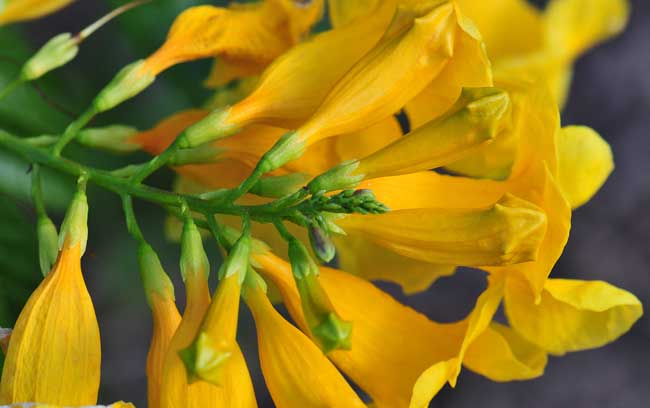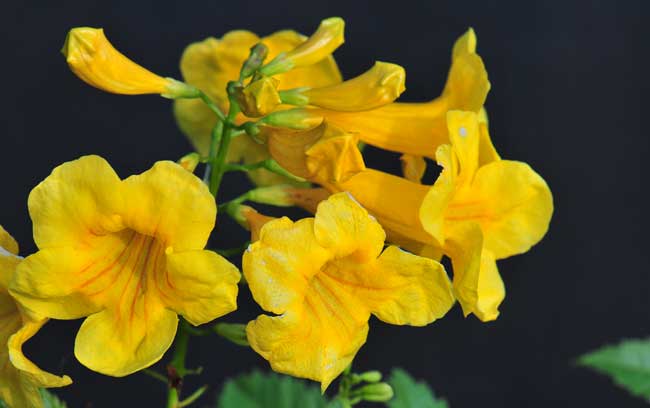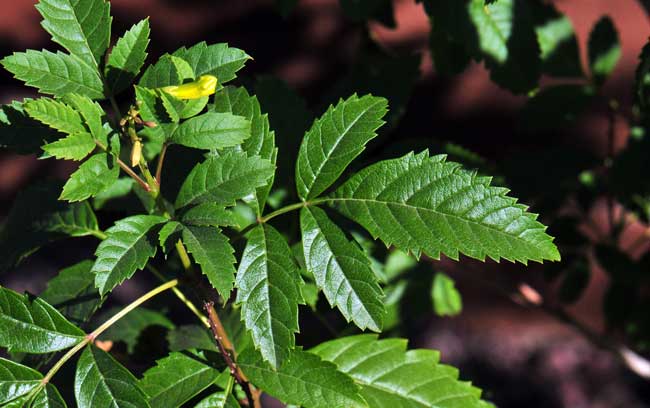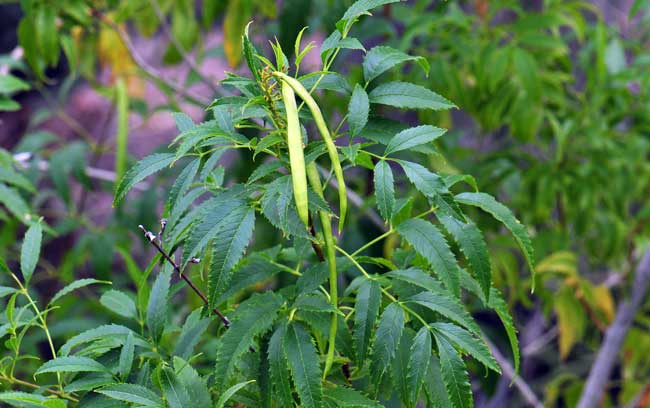Tecoma stans, Yellow Trumpet Bush




Scientific Name: Tecoma stans
Common Name: Yellow Trumpet Bush
Also Called: Esperanza, Trumpet-flower, Trumpetbush, Trumpetflower, Yellow Elder, Yellow Trumpetflower; (Spanish: Gloria, Lluvia de Oro, Tronador, Caballito)
Family: Bignoniaceae, Trumpet Creeper Family
Synonyms: (Bignonia stans, Stenolobium stans, Tecoma stans var. angustatum)
Status: Native.
Duration: Perennial
Size: Up to 6 feet or more, 2 or 3 feet in Arizona.
Growth Form: Small tree or large shrub; mostly erect, multiple branches, striking profile in bloom with its bright yellow flowers and bright green leaves.
Leaves: Bright green; opposite, serrate, pinnate, leaflets 5 or more (see photo).
Flower Color: Bright yellow; trumpet-shaped or funnelform; fruit is a pod up to 8 inches long, circular and smooth (terete).
Flowering Season: May to October.
Elevation: 3,000 to 5,000 feet.
Habitat Preferences: Dry gravelly slopes in Arizona.
Recorded Range: Yellow Trumpet Bush, under various names, is found in the southwest and southern United States in AZ, NM, TX and FL. It is also found in Baja California and central and northern Mexico with its range extending south to central and South America. In Arizona it is found in the eastern and southeastern parts of the state.
North America & US County Distribution Map for Tecoma stans.
U.S. Weed Information: No USGS data listed.
Invasive/Noxious Weed Information: No USGS data listed.
Wetland Indicator: Tecoma stans is included on the USDA 2012 National Wetland Plant listed as an obligate upland (UPL) species.
UPL: Almost never occur in wetlands.
Threatened/Endangered Information: No USGS data listed.
Comments: Yellow Trumpet Bush, referenced by many names across its broad southern range is a beautiful plant with significant ornamental use as a cultivated species in desert and upland landscapes. The large showy flowers are readily visited by insects, including bees, butterflies and hummingbirds.

